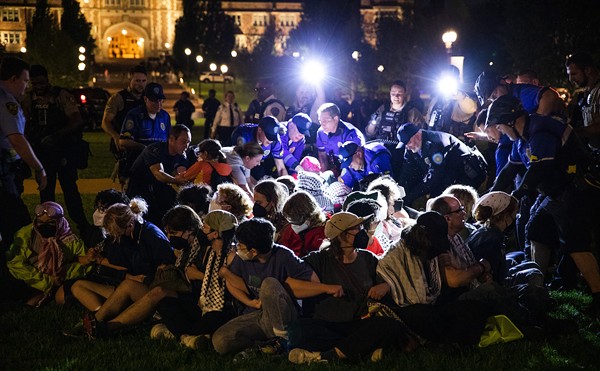Top 20 Cardinals of All Time
By Riverfront Times Staff on Wed, Apr 6, 2022 at 3:58 pm
It’s baseball time! After an owner lockout threatened to derail the season, Cardinals baseball returns on Thursday, April 7 against the Pirates. With Albert Pujols re-joining Yadier Molina and Adam Wainwright, all of whom are nearing the end of their careers, we figured it was time for a full-on nostalgia tour, counting down the 20 greatest Cardinals of all time. Honorable mention to greats who didn’t make the list: Scott Rolen, Harry Brecheen, Frankie Frisch, Chris Carpenter, Jesse Haines, and Bill White.
Scroll down to view images
Page 1 of 2
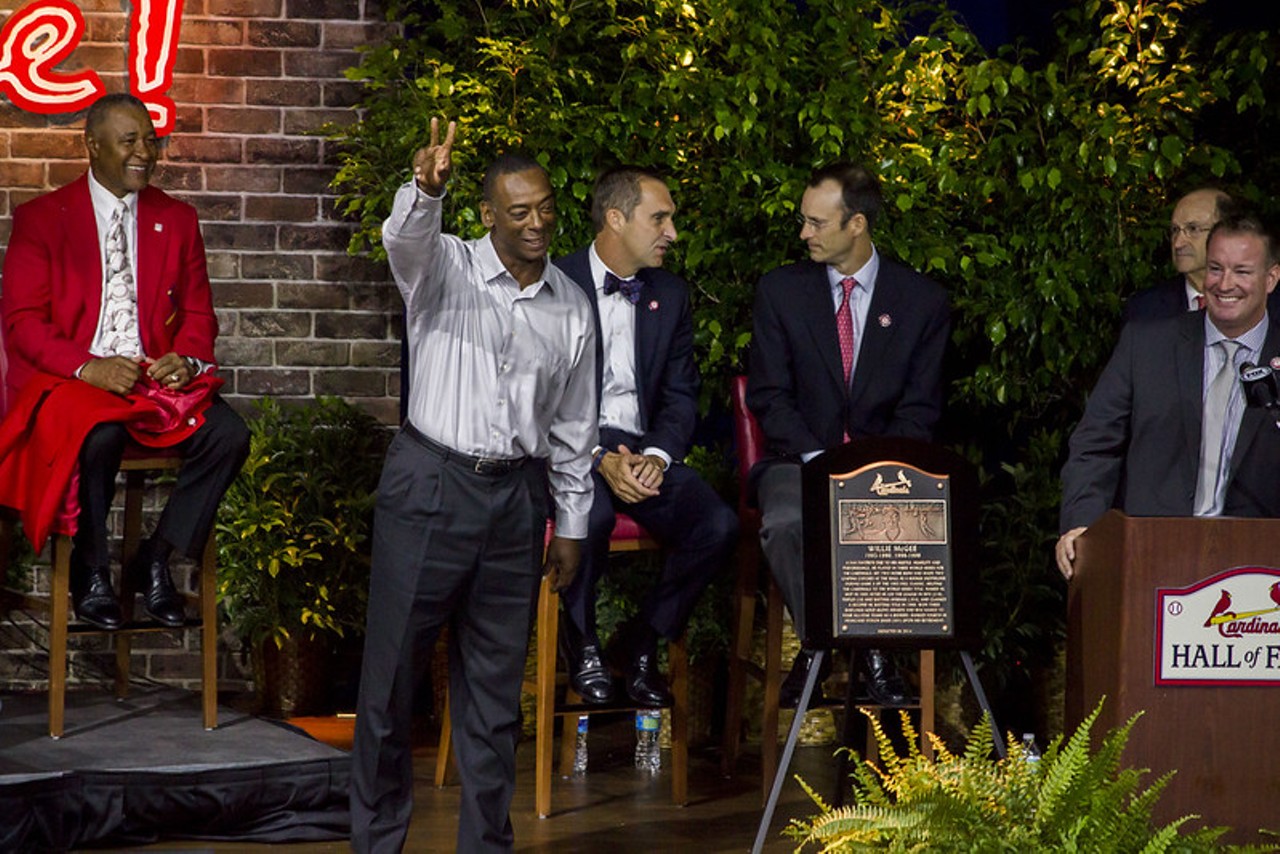
Photo credit: Flickr / @buzbeto
Tie: 20. Willie McGee (1982-90, 1996-99): McGee first won over Cardinals fans by slugging two home runs and robbing one defensively in Game 3 of the 1982 World Series. He went on to win two batting titles and an MVP. His humility endeared him to a Cardinals fan base that showered him with standing ovations for four years following his return in 1996. -Brandon Dahl
1 of 21
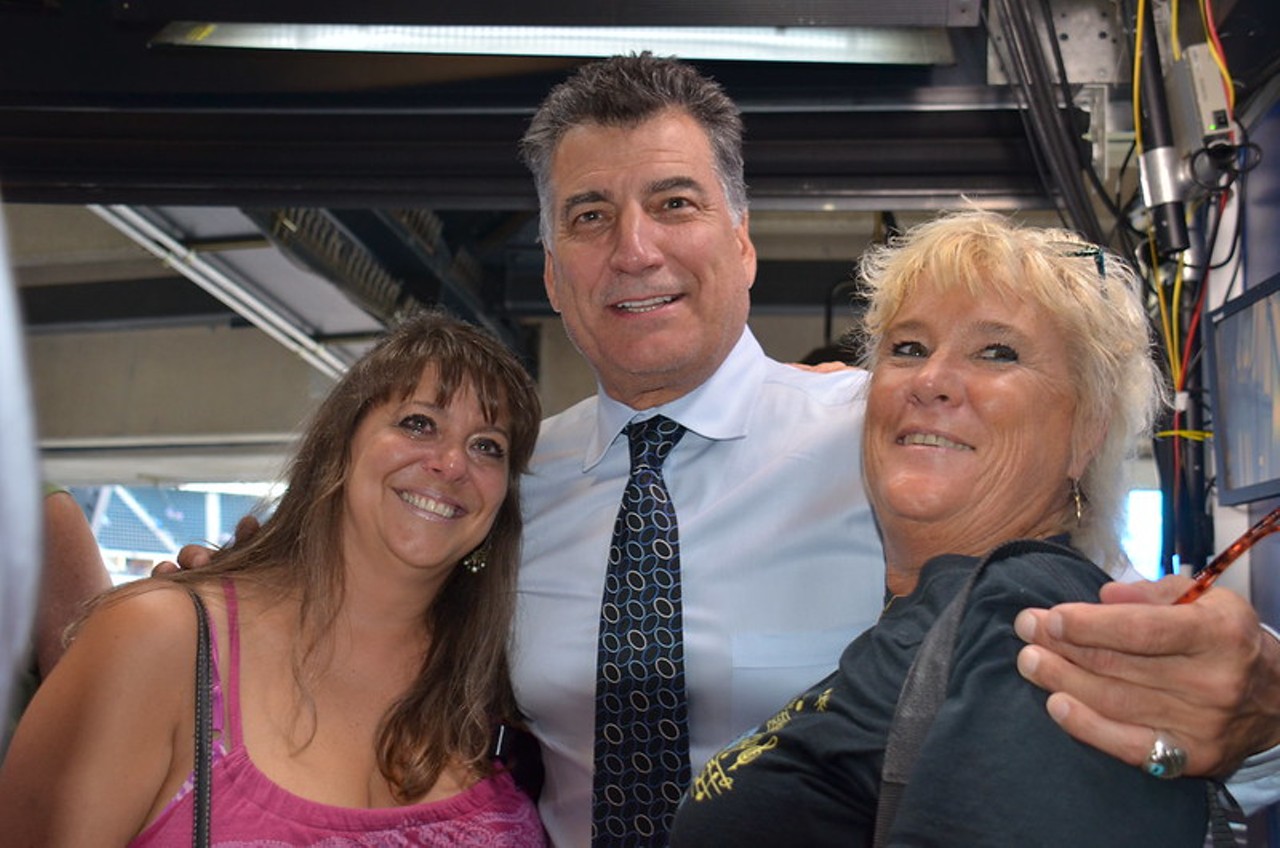
Photo credit: Flickr / @slgc
Tie: 20. Keith Hernandez (1974-83): Before gaining wider fame from his roles with the Pond Scum Mets and Seinfeld, Hernandez put together a solid decade in red. Widely considered one of the greatest defensive first basemen in history, Hernandez earned the first five of his 11 Gold Gloves with the Cardinals. He led the league in batting (.344) during his MVP season in 1979, and delivered a clutch game-tying hit in Game 7 of the 1982 World Series, on his birthday. -Brandon Dahl
2 of 21
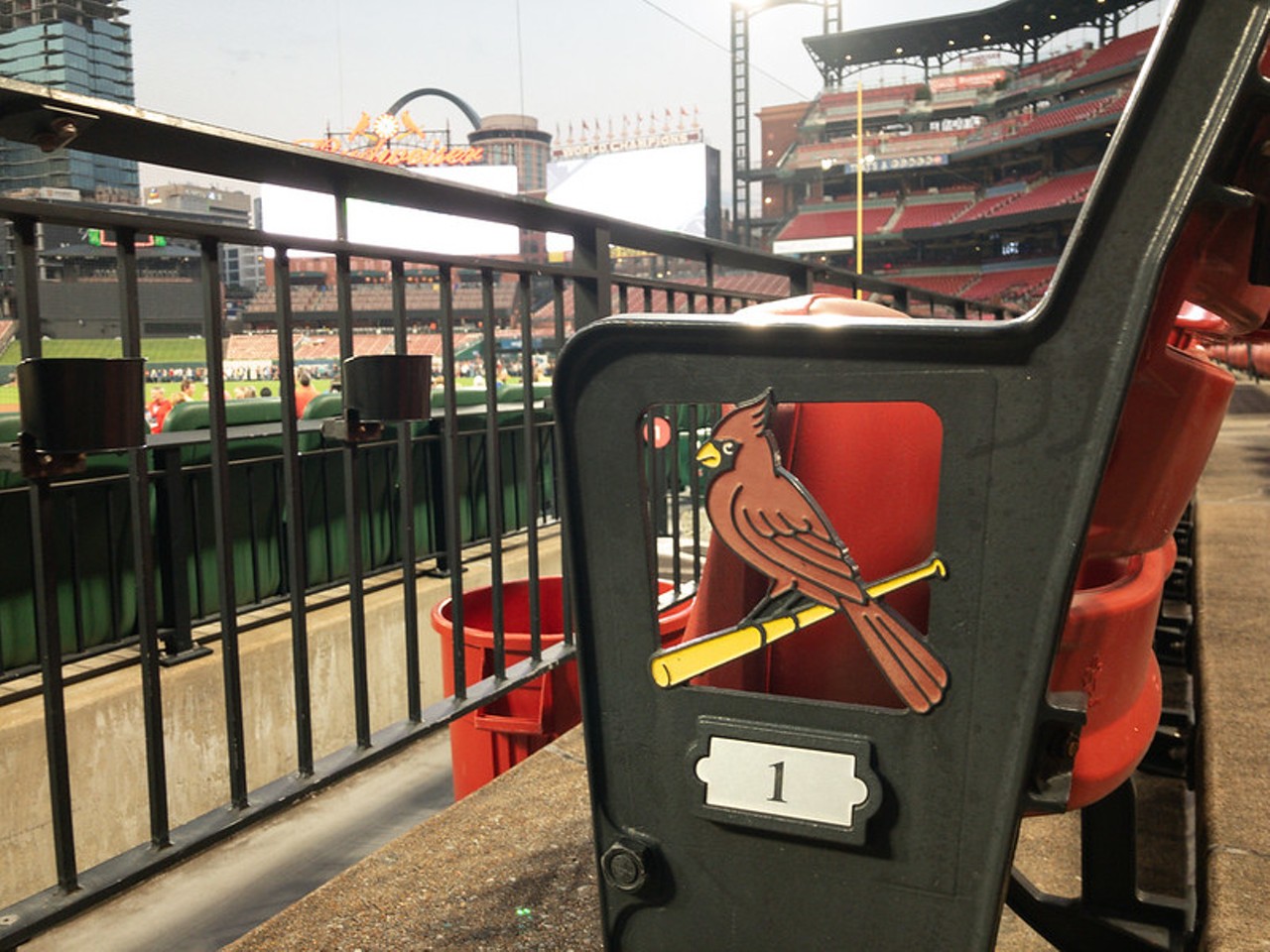
Photo credit: Flickr @joncutrer
19. Jim Bottomley (1922-32): Sunny Jim played first base for the first two Cardinals World Series winners and ranked among the MLB’s top ten in offensive production during his eleven years wearing the Birds on the Bat, as well as winning MVP in 1928. In 1924 he amassed six hits and 12 RBI in a single game. The RBI record, equaled by Cardinals rightfielder Mark Whiten in 1993, still stands. -Brandon Dahl
3 of 21
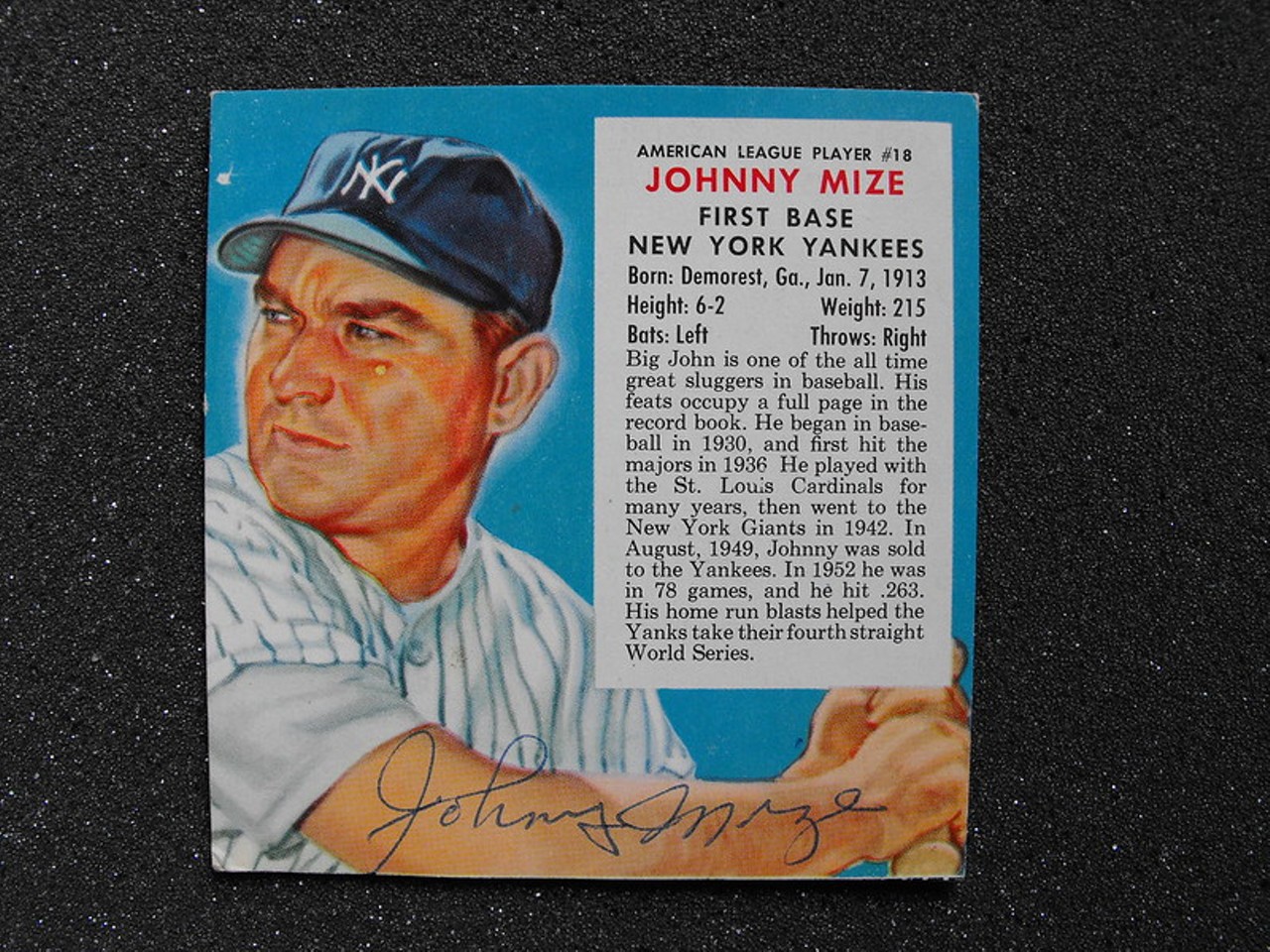
Photo credit: Flickr / @ross6606
18. Johnny Mize (1936-41): Big Cat spent only the first six seasons of his accomplished career in St. Louis, but his offensive achievements are robust, including leading the league in OPS and total bases for three consecutive seasons, and five top-ten MVP finishes. Mize’s 1.018 OPS is third highest in franchise history, while his 43 home runs in 1940 stood as the franchise record until 1998. -Brandon Dahl
4 of 21
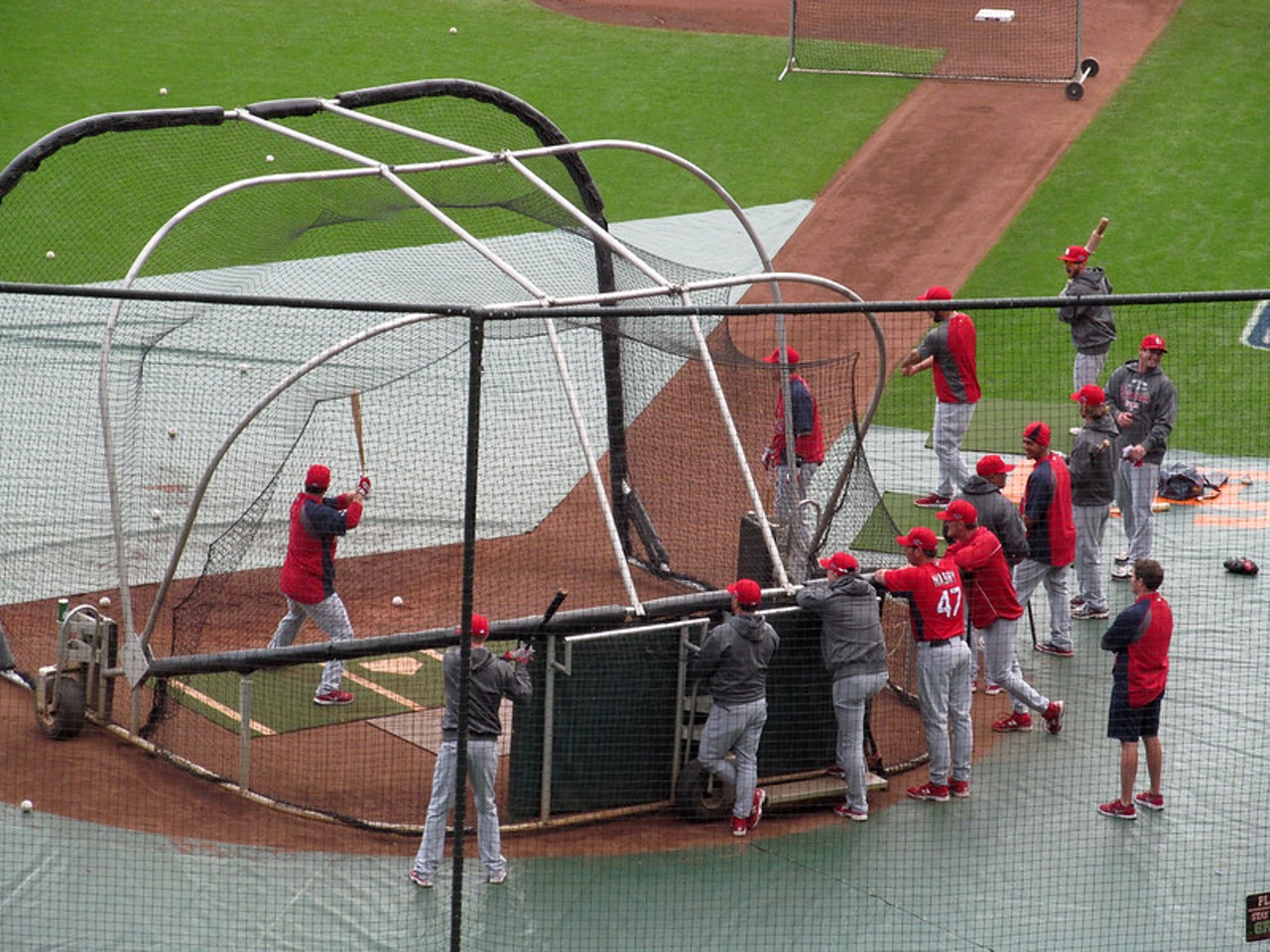
Photo credit: Flickr / @rocor
17. Ray Lankford (1990-2001, 2004): Lankford’s combination of power, speed, batting eye, and longevity place him in the top 10 of several franchise offensive categories, including runs scored, home runs, runs batted in, bases on balls, stolen bases, and total bases. When Busch II fell to the wrecking ball, Lankford was the ballpark’s all-time home runs leader. A favorite jumbotron highlight was Lankford barreling over Phillies catcher Darren Daulton in 1991. -Brandon Dahl
5 of 21
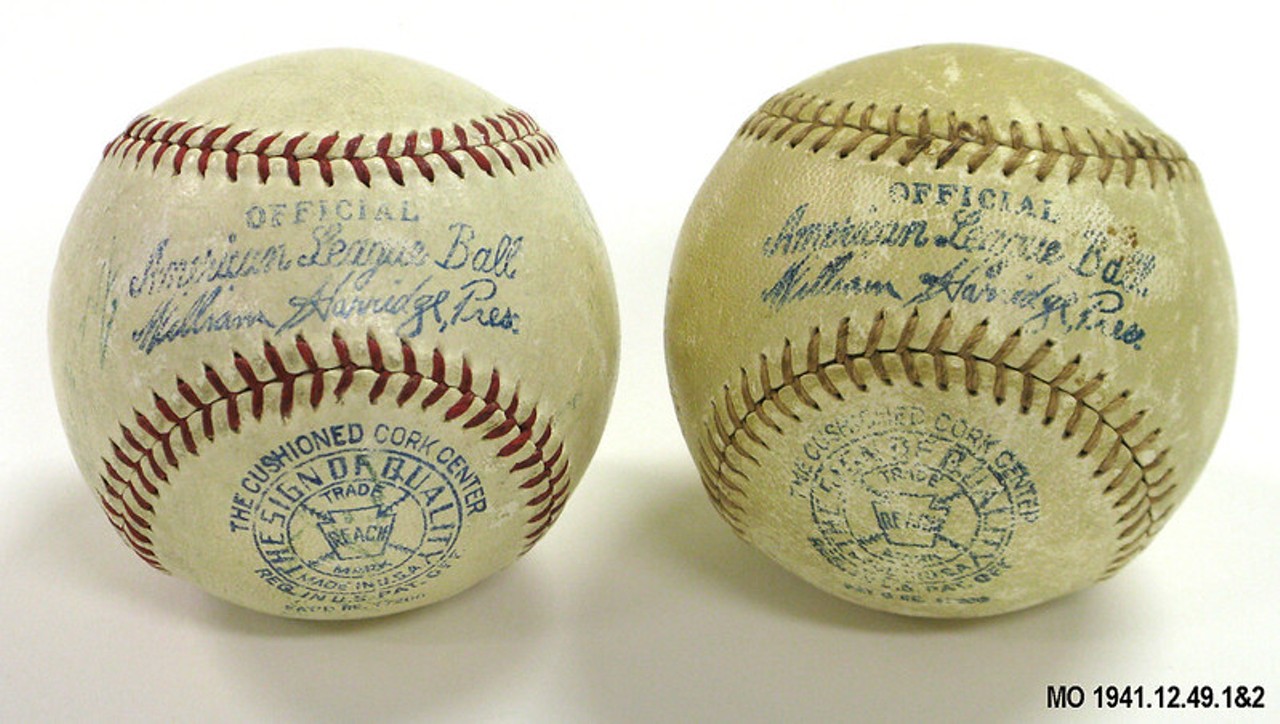
Photo credit: Flickr / @fdrlibrary
16. Joe Medwick (1932-40, 1947-48): A mainstay of the 1930s Gashouse Gang, “Ducky” set the National League record for doubles in a season with 64 in 1936, a mark that stands today. His follow-up act was the 1937 MVP and the National League’s last Triple Crown as he led the league with 31 home runs, 154 runs batted in, and a .374 batting average. -Brandon Dahl
6 of 21
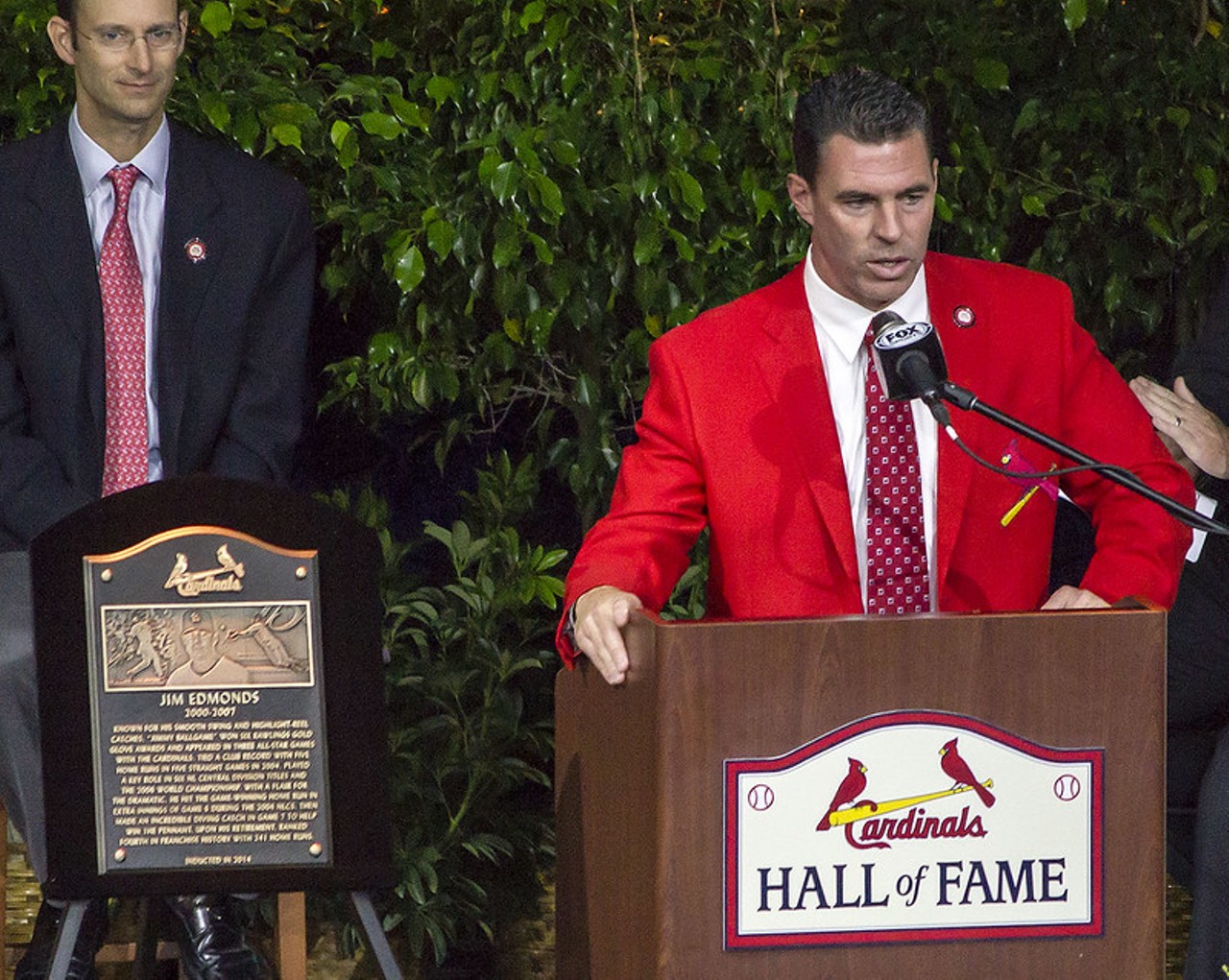
Photo credit: Flickr / @buzbeto
15. Jim Edmonds (2000-07): Having made perhaps the greatest catch in baseball history not known as “The Catch,” Edmonds was incredibly productive both offensively and defensively, a member of the Cardinals’ mid-aughts MV3 tandem, along with Albert Pujols and Scott Rolen. Possessing a left-handed swing as sweet as his centerfield dives, Edmonds perhaps did not achieve the counting stats required by some Hall of Fame voters, though many argue he deserves enshrinement. -Ben Westhoff
7 of 21
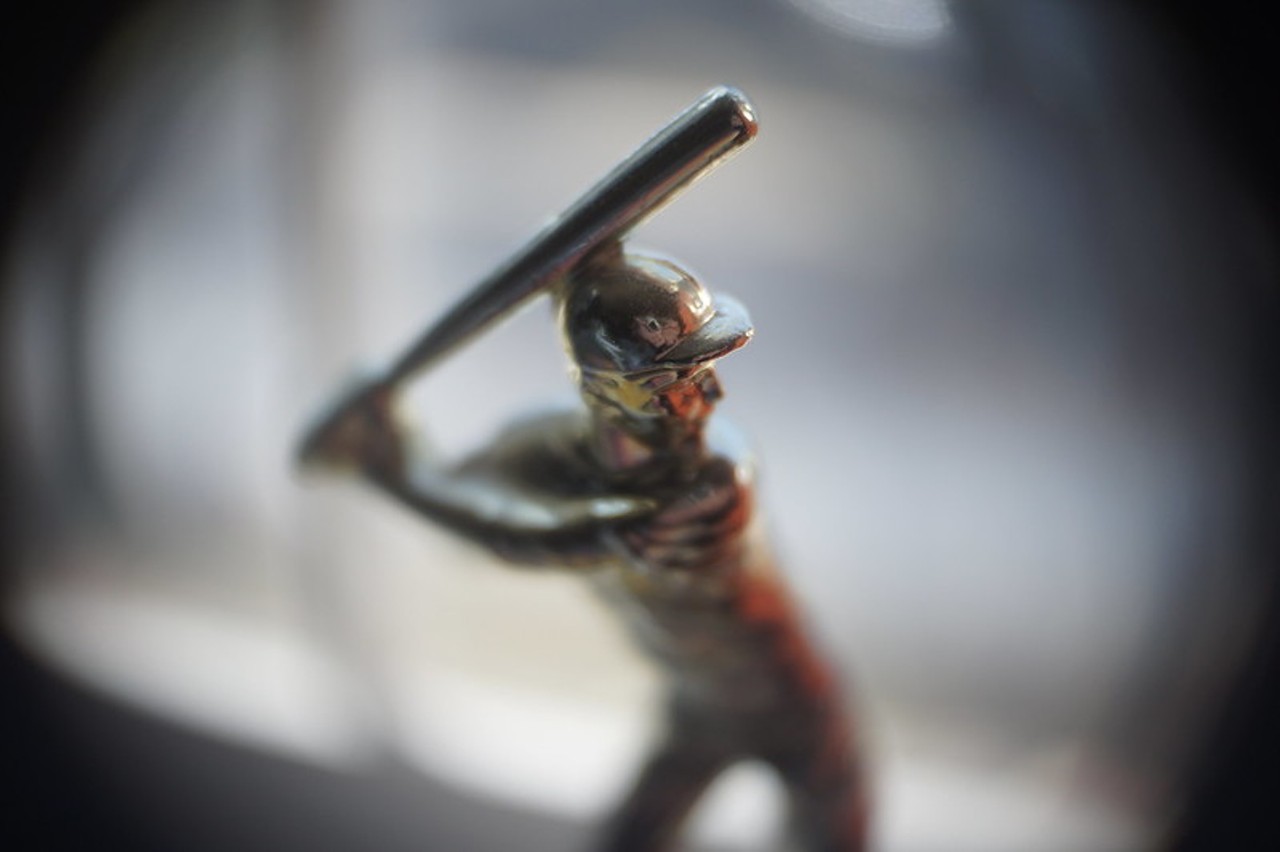
Photo credit: CREDIT Photo credit: Flickr / @ouji
14. Al “Red” Schoendienst (Player: 1945-56, 1961-1963; Manager: 1965-76, 1980, 1990): The redhead from Germantown, IL, took his last 25 cents to an open tryout in St. Louis in 1942, and wore the Birds on the Bat longer than anyone in franchise history. Red was recognized as one of the best second basemen of his era, earning ten All-Star selections and leading the league in fielding percentage seven times. Red remained in uniform for more than 60 years as a World Series winning player, manager, and coach. -Brandon Dahl
8 of 21
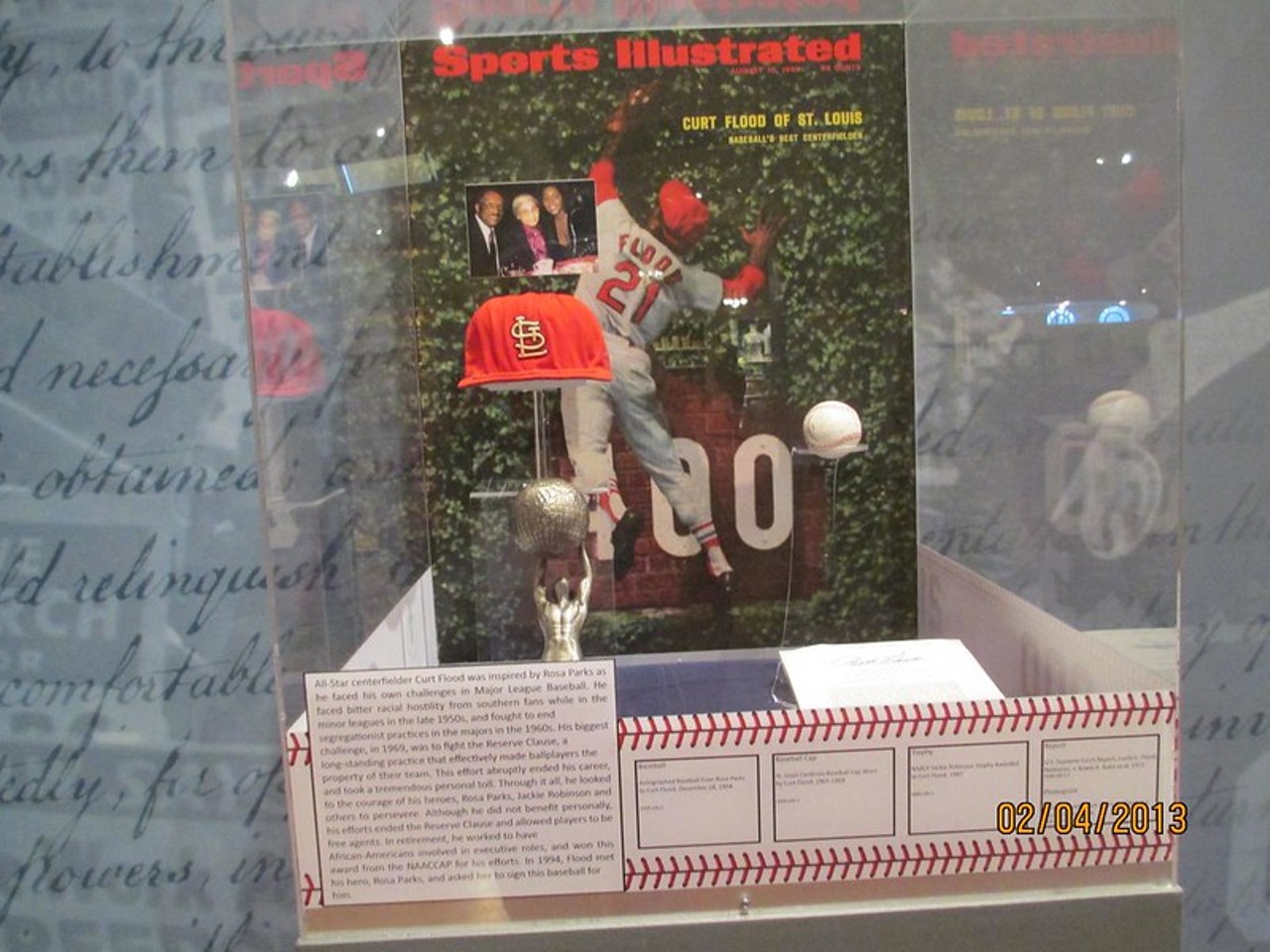
Photo credit: Flickr / @femaletrumpet02
13. Curt Flood (1958-69): Flood’s perennial Gold Glove defense in centerfield helped land him in the top 25 of MVP balloting each year from 1963-1968. His impact on the game was most significant away from the diamond, however; following an unwanted trade to the Phillies in 1969, Flood challenged baseball’s reserve clause all the way to the U.S. Supreme Court. He lost the decision — and his career never regained its footing — but Flood’s sacrifice ultimately paved the way for free agency in baseball. -Brandon Dahl
9 of 21
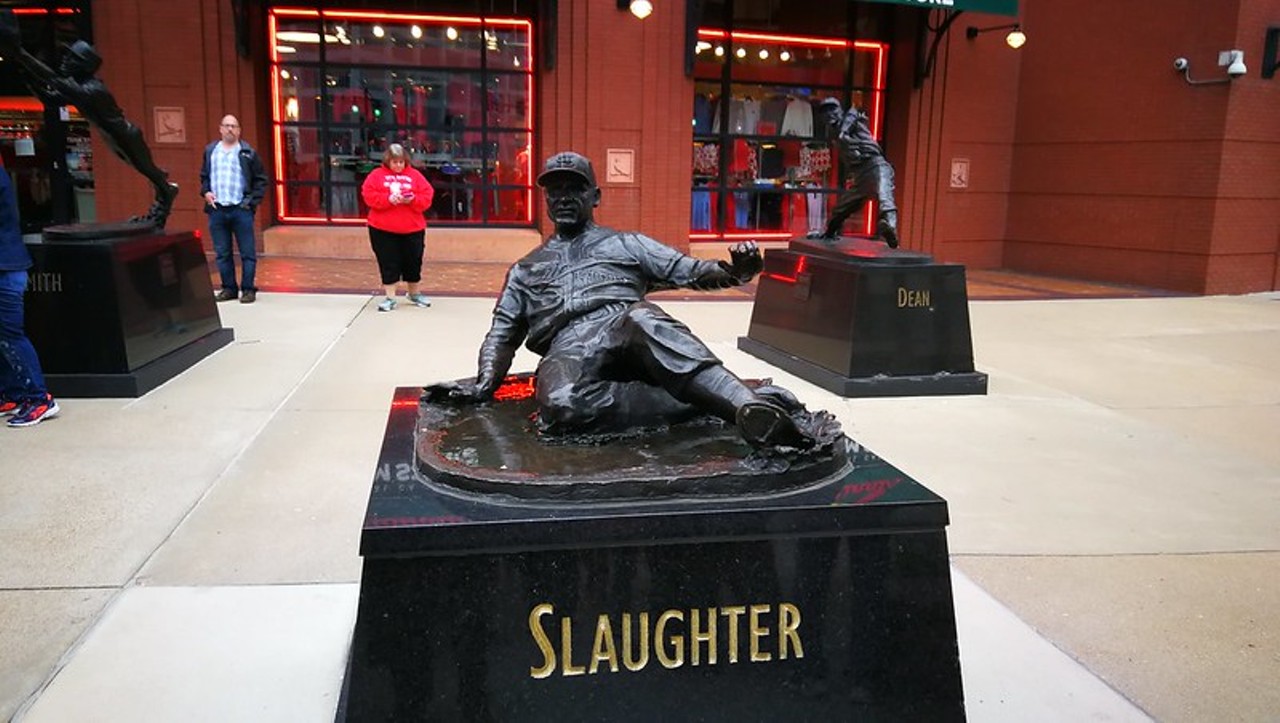
Photo credit: Flickr / @yercombe
12. Enos Slaughter (1938-53): “Country” Slaughter’s style of play was typified by his “Mad Dash” in Game 7 of the 1946 World Series, scoring from first base on a single to plate the decisive Series run. Ten consecutive All-Star appearances preceded a 1954 trade to the Yankees which left him in tears. Slaughter’s legacy is tarnished by allegations he intentionally spiked Jackie Robinson and threatened to boycott the integrated Dodgers in 1947. Slaughter adamantly denied both until his passing. -Brandon Dahl
10 of 21
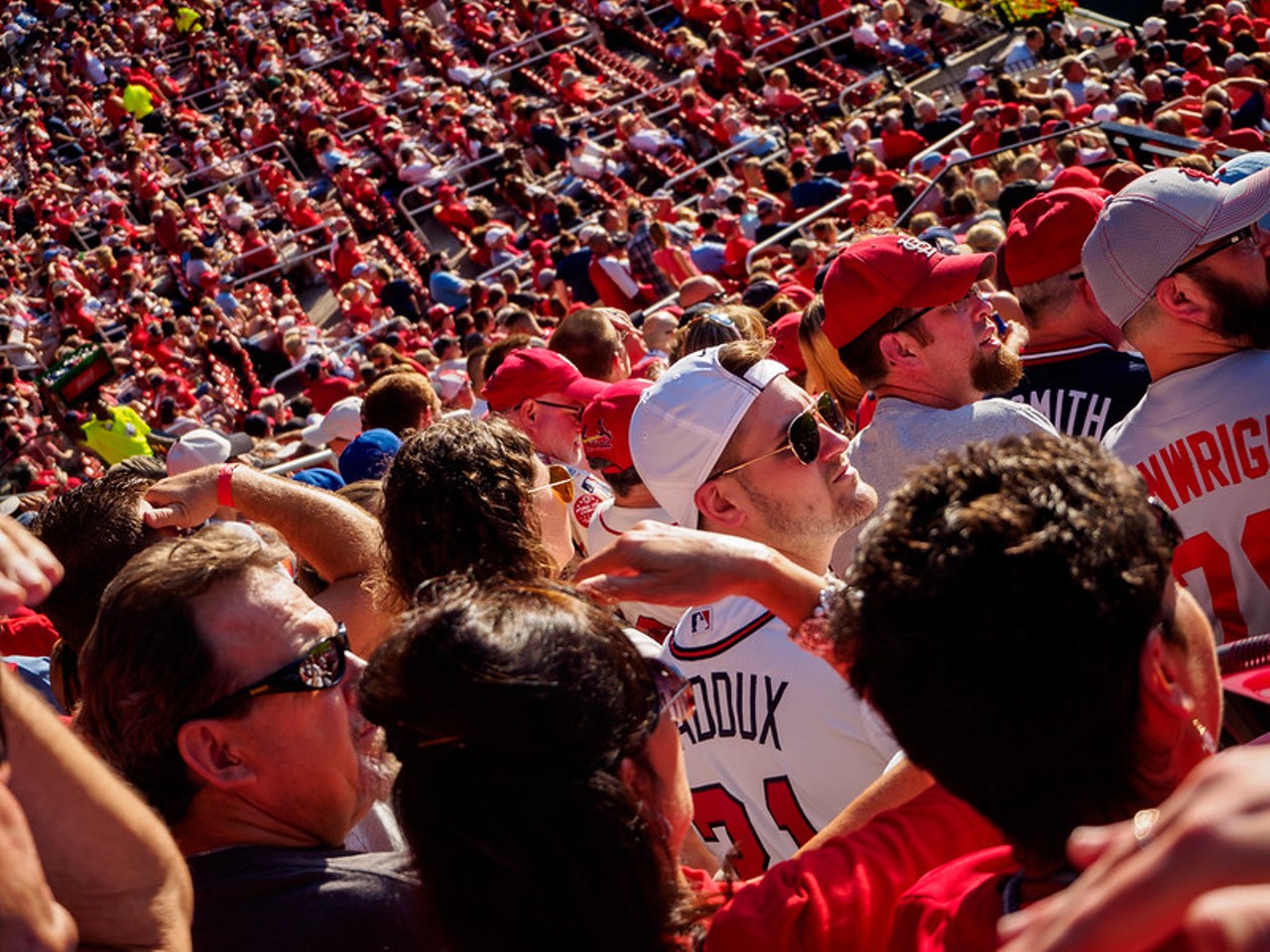
Photo credit: Flickr / @philthomas
11. Jay “Dizzy” Dean (1930-37): One of baseball’s colorful characters, Dizzy was at the center of the 1930s Gashouse Gang. His Cardinals tenure was relatively brief, but he made his mark by taking home MVP honors in 1934 and finishing as runner-up in 1935 and 1936. Dean is the last NL pitcher to win 30 games in a season, punctuating his dominant 1934 season with a shutout in Game 7 of the World Series. -Brandon Dahl
11 of 21
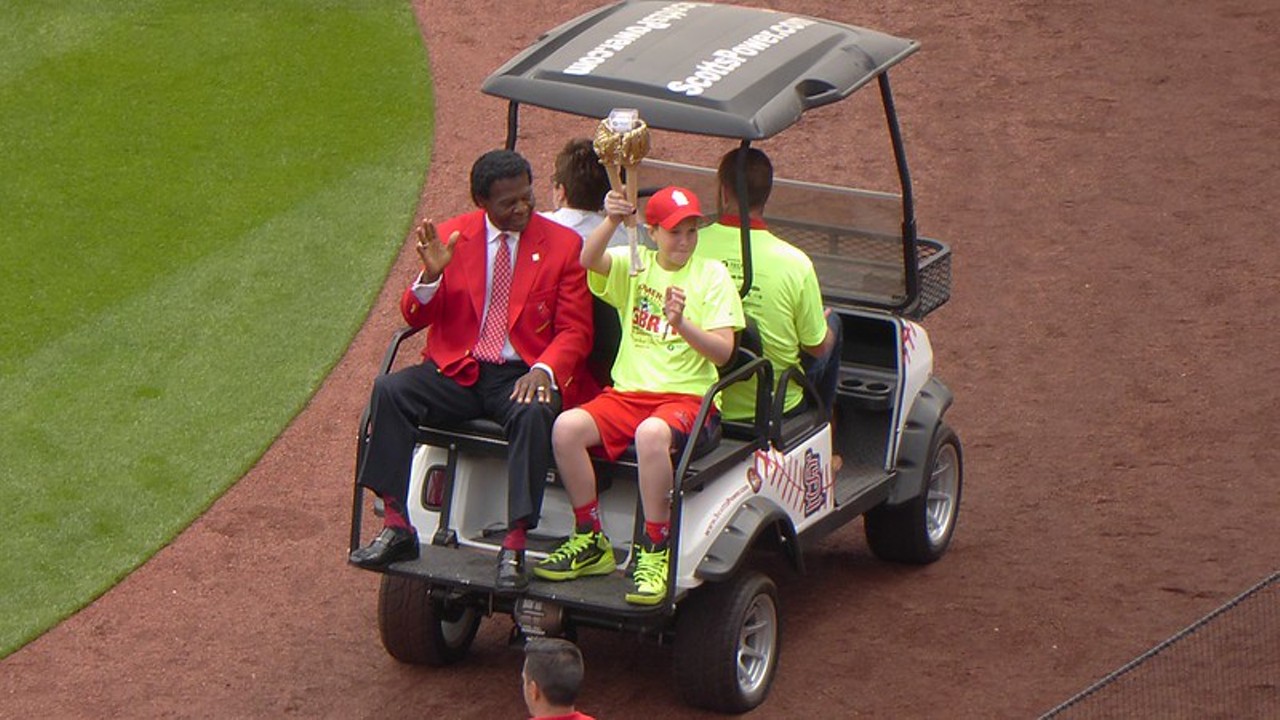
Photo credit: Flickr / @bwibbenm
10. Lou Brock (1964-79): Acquired in 1964 in a notoriously one-sided trade with the Cubs, Lou spent the next 15+ years as a leadoff man and base stealing threat. He compiled more than 3,000 hits and retired as MLB’s stolen bases leader with 938. Although his statistical resume hasn’t aged as well in the era of advanced analytics, Brock’s World Series performances (.391 average, 1.079 OPS, 14 stolen bases) remain unassailable. -Brandon Dahl
12 of 21
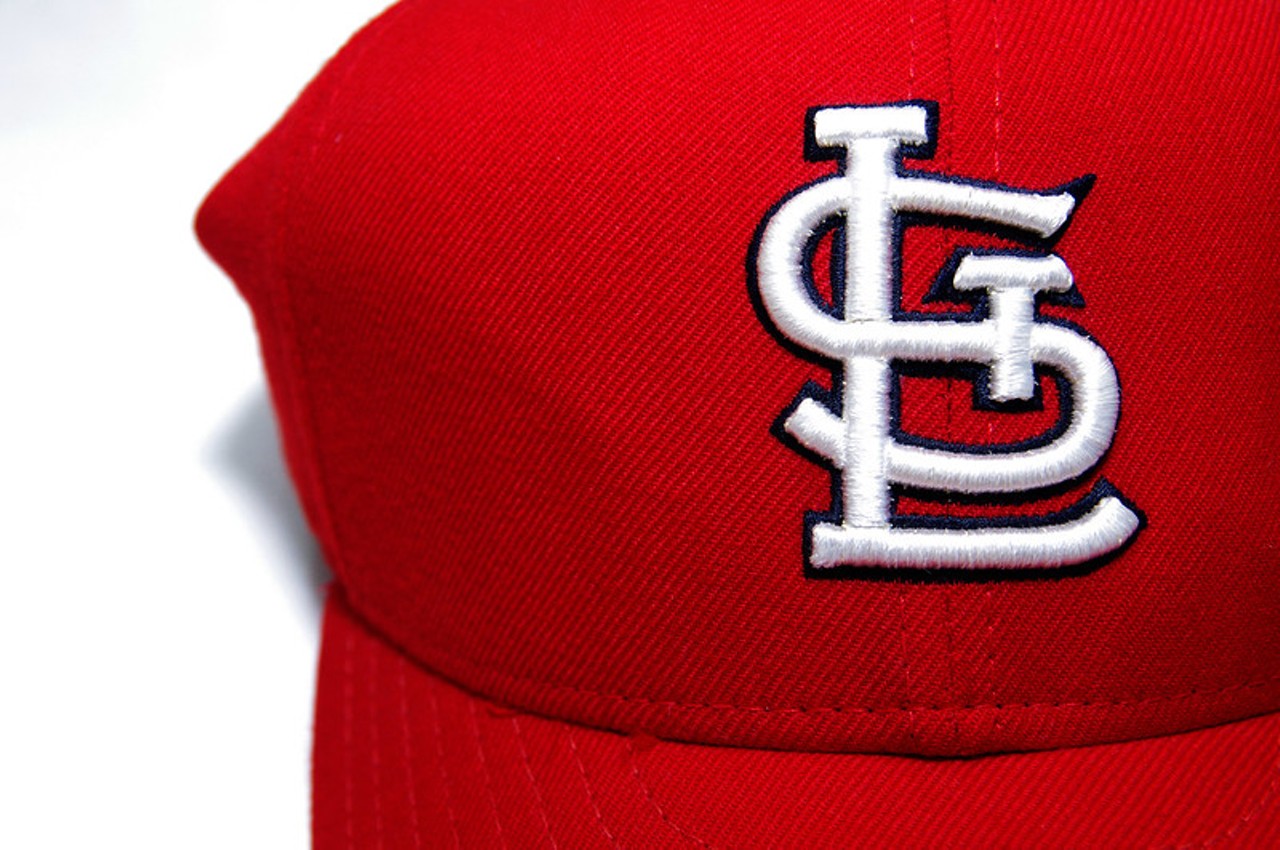
Photo credit: Flickr / @bk1bennett
9. Ted Simmons (1968-80): The 1970s were a lost decade for Cardinals postseason success, but the switch-hitting Simba and his flowing mane flourished on the steamy Busch II artificial turf. The best hitting catcher of his era not named Johnny Bench, Simmons made six All-Star squads as a Cardinal and sits near the top of the career leaderboard for hits, runs batted in, and doubles. Simmons received his overdue induction to the Hall of Fame in 2020. -Brandon Dahl
13 of 21
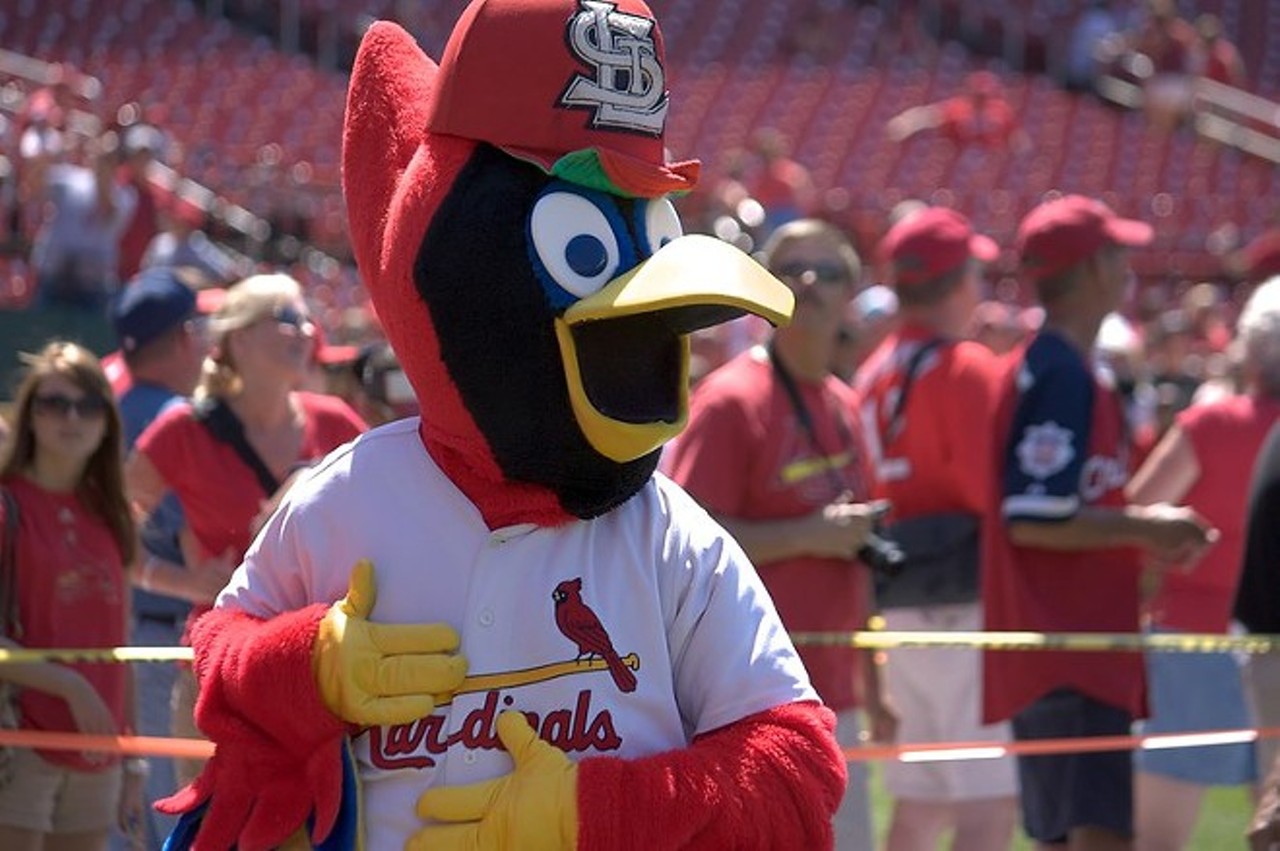
Photo credit: Flickr / @toddawbrey
8. Ken Boyer (Player: 1955-65; Manager: 1978-80): Your grandpa’s favorite player, Boyer earned five Gold Gloves and an MVP as a mainstay at the hot corner. His grand slam in Game 4 of the 1964 World Series swung the game and series momentum to St. Louis, as the Cardinals upended the Yankees (and brother Clete) in seven games. Boyer may yet gain posthumous entry to the Hall of Fame, but for now remains the only unenshrined Cardinal with his number retired. -Brandon Dahl
14 of 21
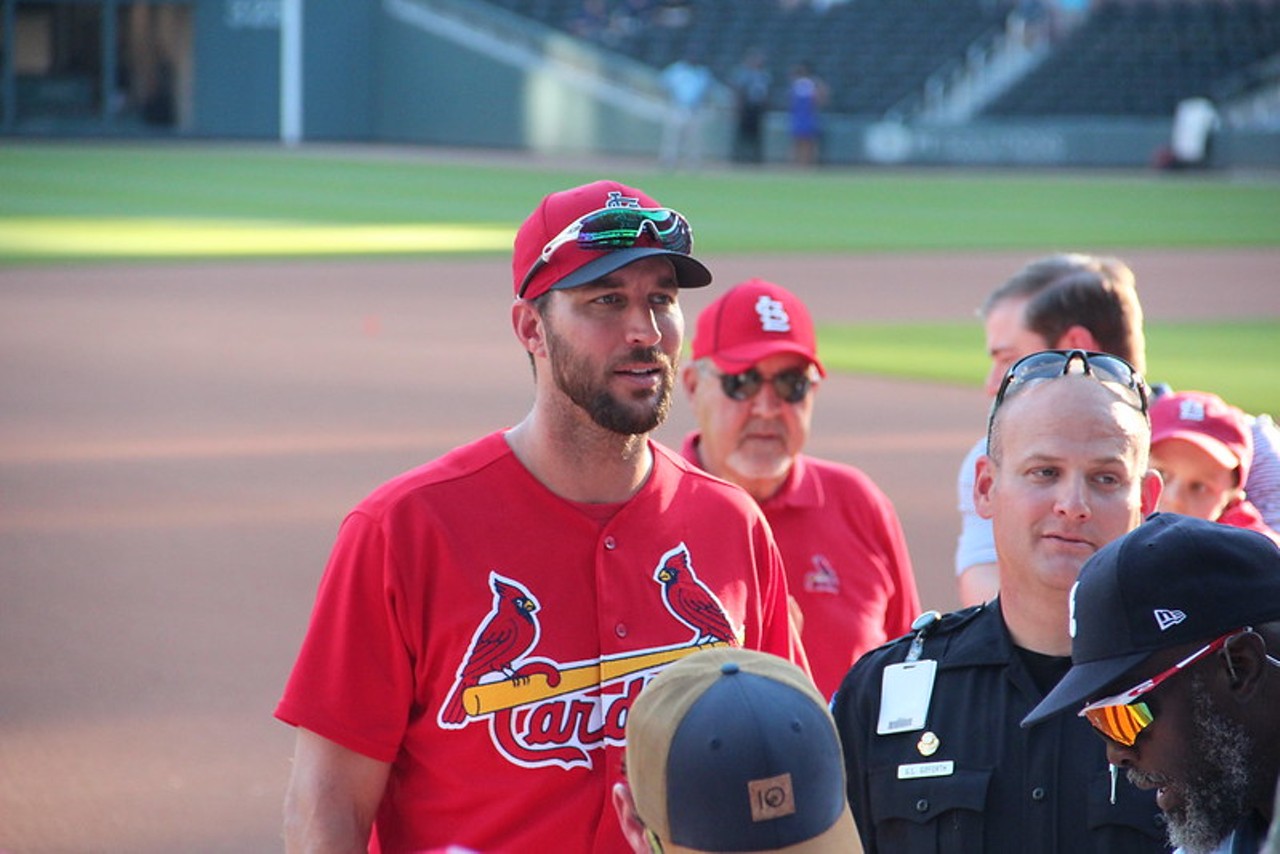
Photo credit: Flickr / @Thomson20192
7. Adam Wainwright (2005- ): Though hailing from Georgia, Wainwright is about as Cardinal as it comes, bursting onto the scene as a reliever who famously buckled Carlos Beltran with his “Uncle Charlie” curveball to beat the Mets in game seven of the 2006 NLCS. Seeming to possess ice in his veins, Wainwright became dominant in the years that followed, with only injuries and a relatively-rough stretch in the late aughts diminishing his Hall of Fame candidacy. Considered washed up few years ago, he has re-emerged and enters the 2022 season as, gulp, the Cards’ ace. -Ben Westhoff
15 of 21
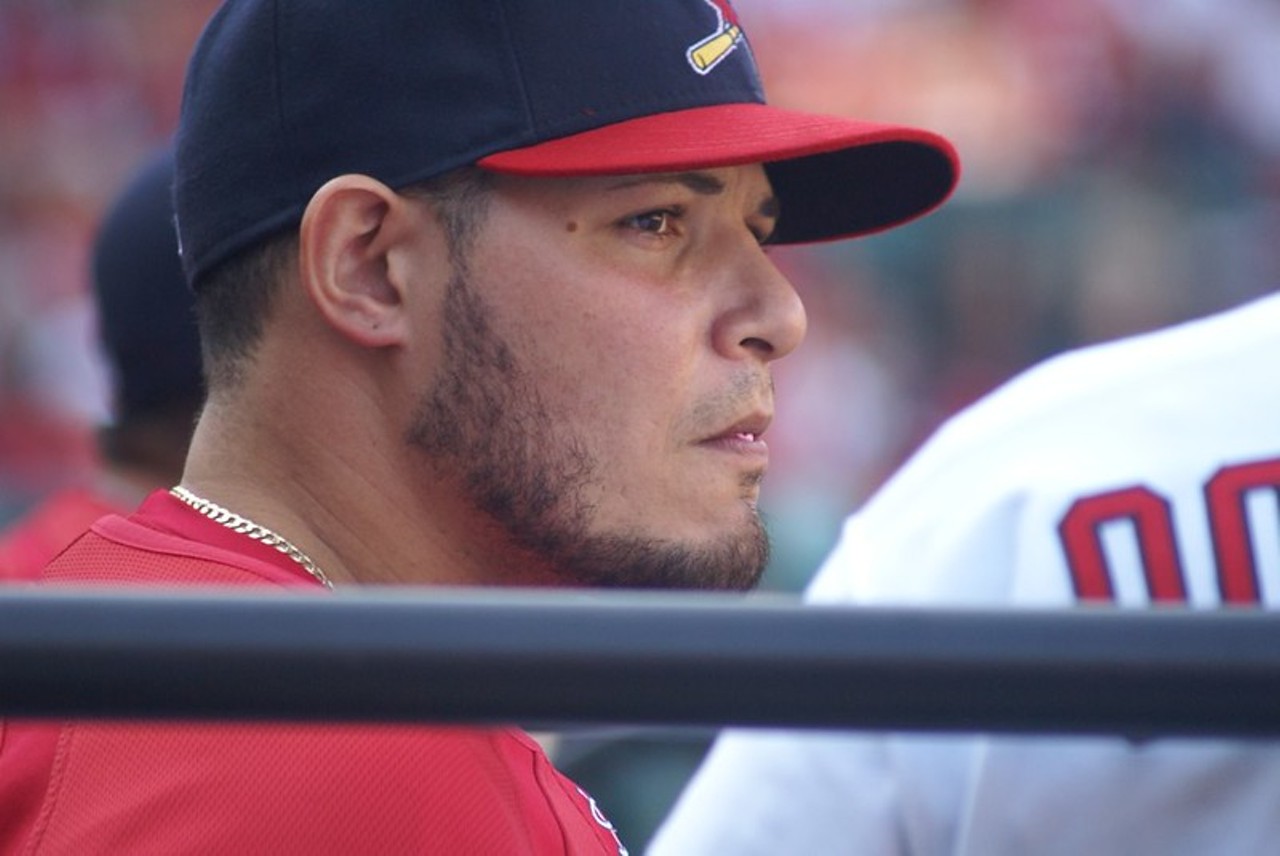
Photo credit: Flickr / @shgmom56
6. Yadier Molina (2004- ): One of three major league catchers from the same Puerto Rican family, Molina surpassed his brothers Benjie and José en route to what will likely be a Hall of Fame career. Initially seen as a no-hit glovesman with a cannon for an arm, Molina’s bat eventually came around, peaking in 2012 when he slugged over .500 and hit 22 home runs. But, beyond his two World Series championships, he’ll always be best known for his defense; nine gold gloves, four platinum gloves, and, perhaps most effectively, gunning down so many runners that eventually people just stopped trying to steal. -Ben Westhoff
16 of 21
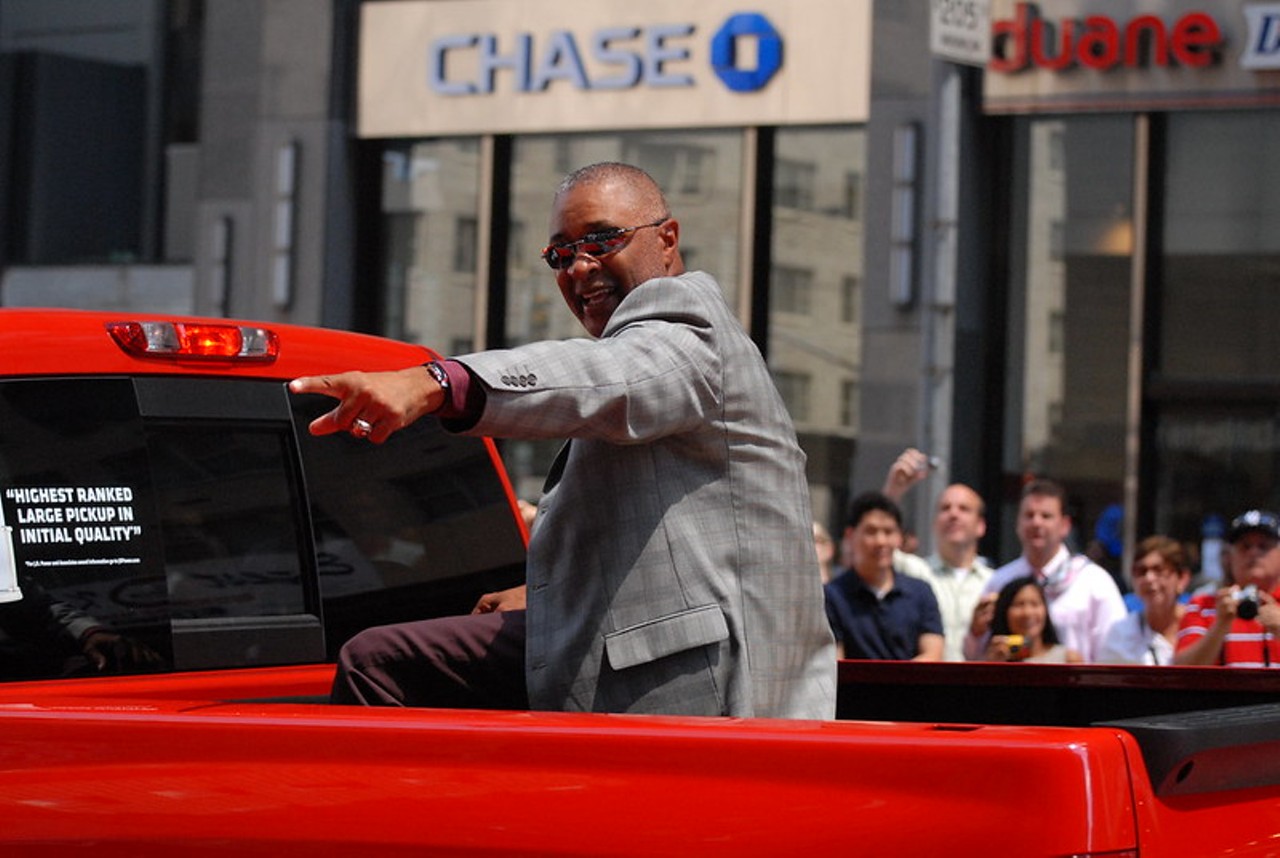
5. Ozzie Smith (1982-96): Ozzie’s deserved reputation as the greatest defensive shortstop in baseball history is backed by 11 consecutive Gold Gloves (13 total) following his arrival in St. Louis in 1982. In addition to his acrobatic defense, the charismatic Wizard is best remembered for his signature backflip while taking his position on Opening Day and in the playoffs, and for a dramatic walk-off home run in Game 5 of the 1985 NLCS. Go Crazy, Folks. -Brandon Dahl
17 of 21
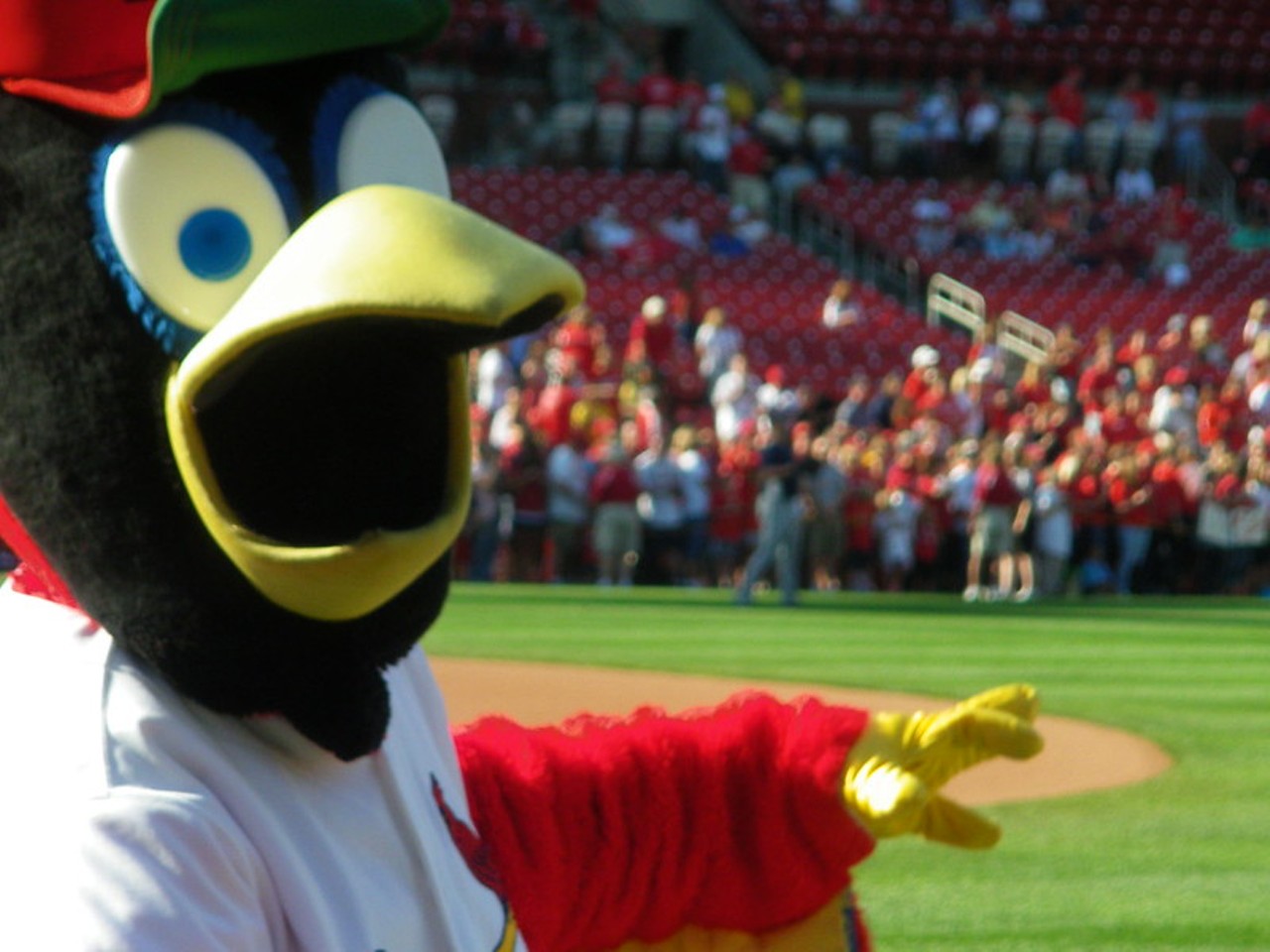
Photo credit: Flickr / @erinborrini
4. Rogers Hornsby (Player: 1915-26, 1933; Manager: 1925-26): Often cited as the greatest right-handed batter ever, The Rajah hit above .400 three times and racked up six batting titles as a Cardinal. Hornsby pulled double duty as player-manager for the first Cardinals championship in 1926, tagging out Babe Ruth in an ill-fated stolen base attempt for the final out of the Series. Hornsby’s prickly demeanor made him few friends and his rumored KKK-affiliation mars the legacy of a prodigious talent. -Brandon Dahl
18 of 21
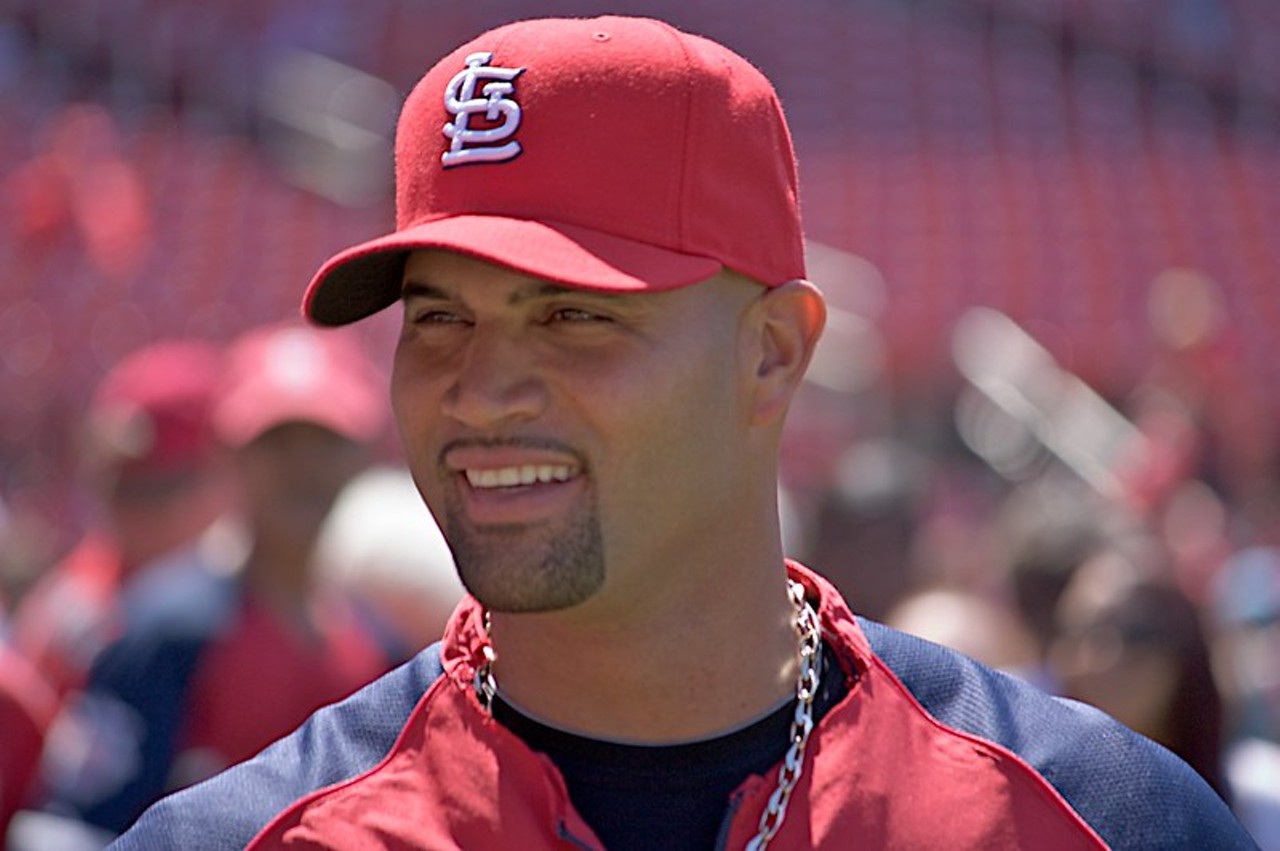
Photo credit: Flickr / @toddawbrey
3. Albert Pujols (2001-11, 2022): “El Hombre” to Stan Musial’s “The Man,” Pujols spent the first half of his career on pace to potentially surpass Hornsby as the greatest right-handed hitter in history. Famously undrafted until the 13th round of the 1999 draft, he went on to bash so consistently during his time in St. Louis that he was also nicknamed, somewhat incongruously, “The Machine.” He won three MVPS and a pair of World Championships before departing for the Angels in 2011, mostly stinking up the place there. But his return to the 2022 Cardinals is more than a nostalgia tour; he still rakes lefties. -Ben Westhoff
19 of 21
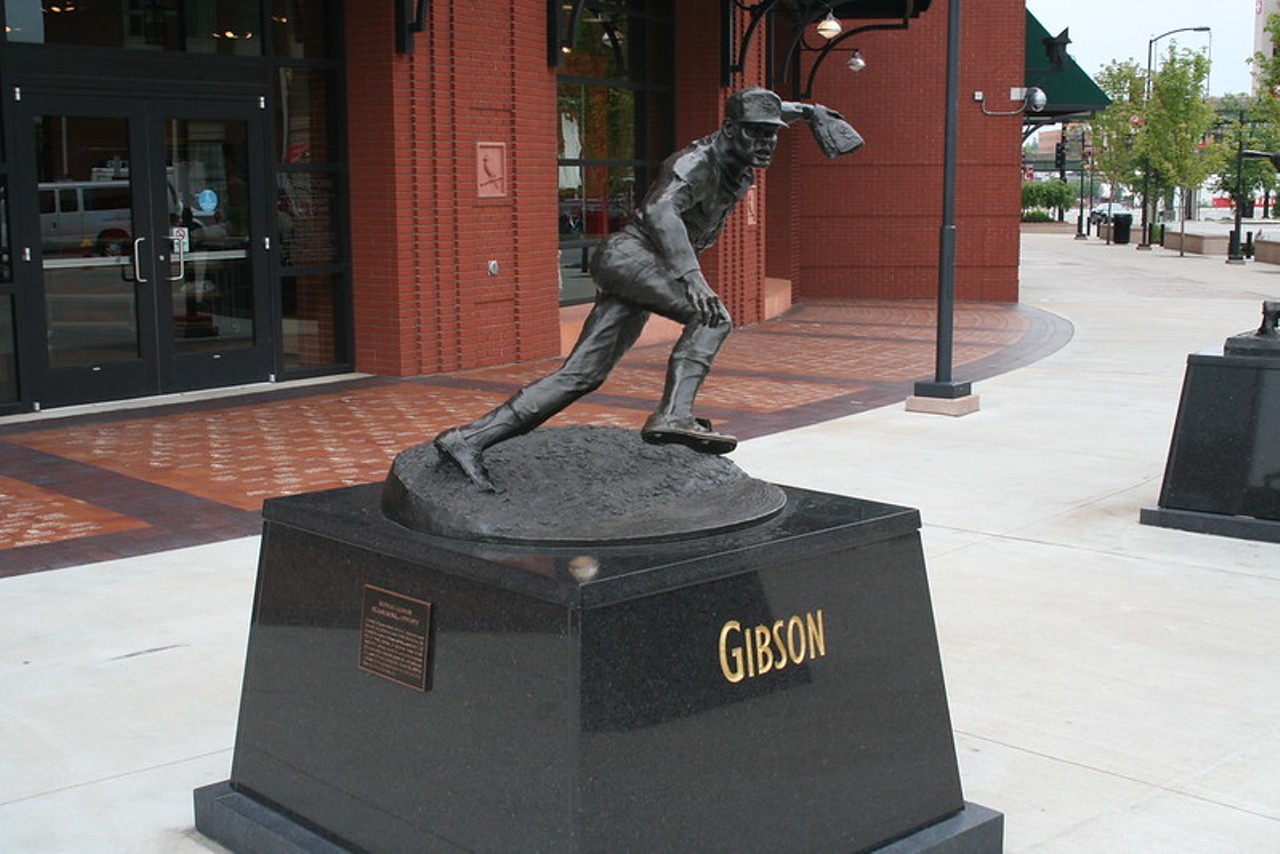
Photo credit: Flickr / @pvsbond
2. Bob Gibson (1959-75): One of the sport’s fiercest competitors, Gibson would knock players down with his fastball and paralyze them with his slider. His 1.12 ERA in 1968 is revered as a standard of excellence in the modern era. Where Gibson shined most was October, winning two World Series MVPs and pitching a remarkable 81 innings over his 9 starts. His 17 strikeouts in Game 1 of the 1968 Series remains the highest single total in Fall Classic history. -Brandon Dahl
20 of 21
Page 1 of 2
- Local St. Louis
- News
- Things to Do
- Arts & Culture
- Food & Drink
- Music
- Movies
- St. Louis in Pictures
- About Riverfront Times
- About Us
- Advertise
- Contact Us
- Jobs
- Support Riverfront Times
- Big Lou Holdings, LLC
- Cincinnati CityBeat
- Louisville Leo Weekly
- Detroit Metro Times
- St. Louis Riverfront Times
- Sauce Magazine


